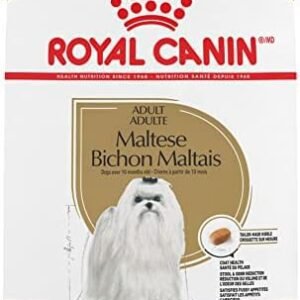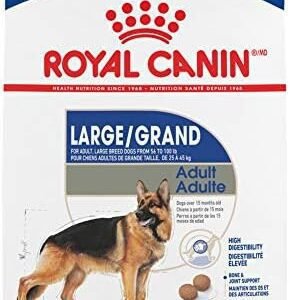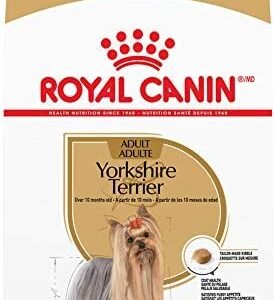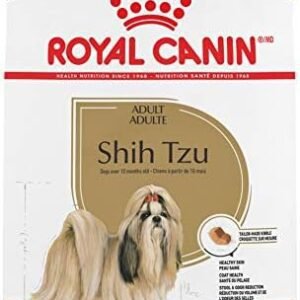Introduction
Have you ever wondered if your loyal canine companion can indulge in the same primal delight as its wild ancestors? Raw meat, with its natural allure, has been a staple in human diets for centuries. But can our beloved pets, with their domesticated ways, partake in this carnivorous feast? The question echoes in the minds of pet owners worldwide: Can dogs eat raw meat? As we explore this intriguing query, we embark on a journey that delves into the intricate world of our furry friends’ dietary needs.
Understanding what our pets can and cannot eat is more than just a matter of curiosity—it’s a fundamental aspect of responsible pet ownership. Just like us, our canine companions deserve a diet that not only satisfies their taste buds but also nurtures their overall health and well-being. In this comprehensive article, we’ll unravel the complexities of the raw meat debate, exploring the nutritional nuances and potential implications of incorporating raw meat into your dog’s diet.
Table of Contents
Navigating the Raw Meat Landscape: Pros and Cons

As we venture deeper into the raw meat debate, we encounter a landscape filled with both promise and peril. Advocates of raw feeding extol its virtues, pointing to enhanced nutrient absorption, improved dental health, and a lustrous coat as the undeniable benefits. Raw meat, with its rich reservoirs of proteins, fats, and essential fatty acids, indeed holds the potential to elevate your dog’s vitality to new heights.
However, like any dietary choice, raw meat comes with its share of risks. The specter of bacterial contamination, including notorious culprits like Salmonella and E. coli, looms large. Dogs, despite their robust constitutions, are not invulnerable to the perils of contaminated meat, which can lead to debilitating gastrointestinal issues. Moreover, the challenge lies not only in the quality of the meat but also in striking a delicate balance of nutrients to prevent potential deficiencies.
Nutritional Bounty of Raw Meat
To understand if raw meat is a viable dietary option for our pets, let’s delve into its nutritional profile. Raw meat, be it beef, chicken, or lamb, is a powerhouse of essential nutrients. Packed with high-quality proteins, raw meat serves as a fundamental building block for your dog’s muscles, ensuring their strength and vitality. Additionally, raw meat is a rich source of vitamins, including Vitamin B complex, essential for energy metabolism, and Vitamin A, vital for vision and immune function.
| Nutrient | Amount per 100 g of raw meat | % Daily Value |
|---|---|---|
| Calories | 210 kcal | 11% |
| Fat | 14.1 g | 22% |
| – Saturated fat | 3.5 g | 18% |
| – Trans fat | 0.1 g | – |
| – Polyunsaturated fat | 1.8 g | – |
| – Monounsaturated fat | 6.1 g | – |
| Cholesterol | 74 mg | 25% |
| Sodium | 68 mg | 3% |
| Carbohydrates | 0.1 g | 0% |
| – Fiber | 0 g | 0% |
| – Sugars | 0 g | 0% |
| Protein | 18.6 g | 37% |
| Vitamin D | 0.1 mcg | 0% |
| Calcium | 14 mg | 1% |
| Iron | 1.2 mg | 7% |
| Potassium | 252.6 mg | 5% |
Note: Nutrient values may vary based on the type of meat.
Balancing Act: Raw Meat in a Dog’s Diet
While raw meat provides an array of nutritional benefits, it’s crucial to approach this dietary choice with caution. Despite the allure of raw indulgence, there are potential drawbacks to consider. Raw meat can harbor harmful bacteria, posing a risk of Salmonella or E. coli contamination. For dogs, equipped with robust digestive systems, this might not always lead to immediate illness, but the long-term implications can be concerning.
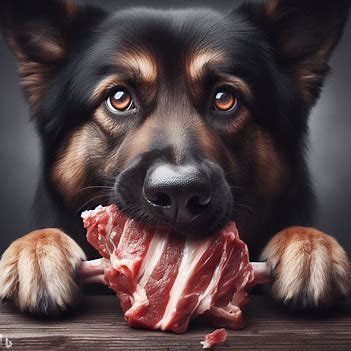
Moreover, an exclusively raw meat diet might create an imbalance in essential nutrients. For instance, excessive consumption of raw meat can lead to a surplus of certain vitamins, causing toxicity over time. This highlights the importance of a balanced diet where raw meat serves as a supplement, not a replacement. The delicate art of crafting a diet that harmonizes raw indulgence with complete canine nutrition is where responsible pet ownership truly shines.
Making Informed Choices for Your Canine Companion
As a pet owner, your responsibility is to make well-informed choices that prioritize your dog’s health and happiness. When considering incorporating raw meat into your dog’s diet, consult a knowledgeable veterinarian. They can offer personalized guidance, tailoring the diet to your dog’s specific needs and health condition. Regular veterinary check-ups are essential, ensuring that any dietary adjustments align with your dog’s overall well-being.
In conclusion, the question “Can dogs eat raw meat?” isn’t merely a yes or no query. It’s a nuanced exploration into the delicate balance between canine cravings and nutritional necessities. Raw meat, with its primal allure, can be a tantalizing addition to your dog’s diet, enhancing their culinary experiences. However, this indulgence must be met with vigilance, education, and professional guidance.
So, as you ponder the prospect of introducing raw meat to your dog’s menu, remember the importance of balance, consultation, and above all, the well-being of your cherished companion. In the realm of canine cuisine, informed decisions pave the way for a healthier, happier, and heartier life for your furry friend.
Moderation and Mindful Portions: Decoding the Right Amount of Raw Meat for Your Canine Companio
So, now that we’ve explored the tantalizing world of raw meat for dogs, the natural question that arises is, how much raw meat can a dog actually eat? Just like with any indulgence, moderation is the golden rule. While raw meat can indeed be a delectable treat for your furry friend, it should never overshadow the balance of their overall diet. Treats, including raw meat, should ideally constitute no more than 10% of your dog’s daily calorie intake. This ensures that while they enjoy the culinary adventure, their primary nutrition remains steadfast and complete.
Start Small, Observe, and Adapt
When introducing raw meat to your dog’s diet, it’s wise to start small. Begin with a modest piece and keenly observe your dog’s reaction. Dogs, like humans, can have individual preferences and tolerances. Some might relish the raw meat immediately, while others might need time to adjust. This initial observation phase allows you to gauge your dog’s enthusiasm and any potential allergic reactions.
Preparation: Key to Safe Consumption
Preparing raw meat for your dog involves more than just slicing it up. The way you handle, store, and serve the meat significantly impacts your dog’s safety. Always ensure that the raw meat is fresh and of high quality. Properly store it in the refrigerator, minimizing exposure to air and bacteria.
Before serving, consider a few crucial steps to enhance safety:
- Freezing: Freezing raw meat for a few days before offering it to your dog can help kill potential parasites.
- Thawing: Thaw the meat in the refrigerator to avoid bacterial growth. Avoid microwaving as it can create uneven thawing and partially cook the meat.
- Handling: Maintain excellent hygiene. Wash your hands, utensils, and surfaces thoroughly after handling raw meat.
Size, Breed, and Serving Sizes
The size and breed of your dog play a significant role in determining how much raw meat they can comfortably tolerate. Larger dogs generally have a higher tolerance for meat consumption compared to their smaller counterparts. A Great Dane, for example, might handle a larger portion without issues, whereas a Chihuahua should be served a proportionate amount.
Appropriate Serving Sizes Based on Weight:
- Small Breeds (Up to 20 lbs / 9 kg): 2-3 small pieces of raw meat per day.
- Medium Breeds (20-50 lbs / 9-23 kg): 4-5 medium-sized pieces of raw meat per day.
- Large Breeds (50-100 lbs / 23-45 kg): 6-7 large pieces of raw meat per day.
- Giant Breeds (100+ lbs / 45+ kg): 8-10 extra-large pieces of raw meat per day.
Remember, these are general guidelines and should be adjusted based on your dog’s individual metabolism, activity level, and overall health. Regular monitoring of your dog’s weight and condition is crucial in fine-tuning their diet.
A Culinary Adventure in Moderation
In the grand culinary adventure of raw feeding, moderation and mindfulness are your trusty guides. The joy of watching your dog relish a carefully prepared piece of raw meat is undoubtedly heartwarming. Yet, in this culinary exploration, responsible pet ownership reigns supreme. By starting small, ensuring proper preparation, considering your dog’s size and breed, and closely monitoring their reactions, you can provide a safe and enjoyable raw meat experience for your beloved pet.
So, as you embark on this gastronomic journey with your furry friend, remember that every wag of their tail and every satisfied sigh speaks volumes about the bond you share. Through mindful feeding and a discerning approach, you can elevate their culinary experiences, ensuring that their meals are not just nourishing but also delightful. After all, a happy, healthy dog is the best reward for your dedicated efforts in providing the finest in canine cuisine. Bon appétit to your furry connoisseur!
Navigating the Risks: Understanding the Potential Hazards of Feeding Raw Meat to Dogs
As we plunge deeper into the raw meat debate, it’s crucial to illuminate the shadowy corners where risks lurk. While the allure of a raw diet is undeniable, it’s not without its pitfalls. Feeding raw meat to dogs introduces a spectrum of potential hazards, demanding a keen eye and an informed approach from vigilant pet owners.
Food Allergies and Intolerances
Just like humans, dogs can develop allergies, and raw meat is no exception. While some dogs might revel in the taste, others could suffer from adverse reactions, primarily in the form of food allergies or intolerances. Short-term signs of food intolerance often manifest as gastrointestinal distress. Vomiting, diarrhea, or persistent stomach discomfort are red flags that should raise concern.
Beyond these immediate concerns, certain components within raw meat can trigger allergies. For instance, proteins like beef or chicken might be the culprit, leading to allergic reactions. Pet owners must be vigilant, observing their dogs closely after introducing any new meat into their diet. Should signs of allergic reactions appear, prompt action, and a switch in diet might be necessary.
Specific Hazards in Raw Meat
While raw meat is teeming with nutrients, it can also harbor potential hazards, some of which might not be immediately apparent. For instance, bones, while natural and healthy for dogs to chew on, can splinter, posing a choking hazard or causing internal injuries. Dogs consuming raw meat with bones should always be supervised to mitigate this risk.
Moreover, the risk of bacterial contamination, a point emphasized earlier, cannot be overstated. Raw meat, especially when not handled or stored correctly, can be a breeding ground for dangerous bacteria like Salmonella and E. coli. These pathogens can wreak havoc on a dog’s digestive system, leading to severe gastrointestinal distress. Symptoms of bacterial contamination might include lethargy, loss of appetite, fever, or unusually foul-smelling stools.
Potential Digestive Issues and Beyond
Beyond the immediate concerns of allergies and bacterial contamination, raw meat consumption can lead to a range of digestive issues. Dogs might experience constipation or, conversely, diarrhea, disrupting their regular bowel movements. Additionally, sudden dietary changes, especially those involving raw meat, can cause pancreatitis, an inflammation of the pancreas. Pancreatitis can result in severe abdominal pain, vomiting, and dehydration, necessitating immediate veterinary care.
Recognizing Adverse Reactions
The signs and symptoms of adverse reactions in dogs from consuming raw meat can vary widely. Pet owners must be vigilant observers, noting any deviations from their dog’s usual behavior, appetite, or bathroom habits. Lethargy, excessive salivation, or refusal to eat are signs that should never be dismissed lightly. Moreover, any signs of distress, such as whining, restlessness, or visible discomfort, should be cause for concern.
Culinary Creativity: Elevating Your Dog’s Dining Experience with Raw Meat
As we navigate the intriguing terrain of raw feeding for our beloved canines, the question arises: how can we transform this nutritional necessity into a delightful culinary adventure for our furry friends? Feeding raw meat to your dog isn’t just about meeting their dietary needs; it’s also an opportunity to engage their senses and enhance their mealtime experience. Let’s explore creative and enjoyable ways to feed raw meat to your dog, turning their meals into a flavorful journey they eagerly anticipate.
1. Fresh and Frozen Treats: A Frosty Delight
One of the simplest yet most enjoyable ways to introduce raw meat is through fresh or frozen treats. These treats can be made by cutting raw meat into small, bite-sized portions and freezing them. The cool, refreshing texture adds a new dimension to their mealtime routine. Frozen raw meattreats not only provide a sensory delight but also serve as a soothing option, especially during hot weather.
2. Food Topper or Mixer: A Gourmet Touch
Elevate your dog’s regular meals by using raw meat as a food topper or mixer. Simply add small amounts of finely chopped or ground raw meat to their regular dog food. This not only enhances the aroma but also infuses their meal with rich flavors. Mixing raw meat with their kibble or wet food can entice even the pickiest eaters, making mealtime a gourmet experience.
3. Homemade Treats and Snacks: A Chef’s Touch
Unleash your inner chef and explore the realm of homemade treats and snacks crafted with raw meat. From meaty biscuits to savory meatballs, there are numerous recipes tailored to tantalize your dog’s taste buds. Experiment with different proteins like chicken, beef, or even fish to create a variety of treats. Remember, moderation is key, so these treats should complement their regular diet, not replace it.
Recipe Idea: Meaty Pupcakes
Ingredients:
- 1 cup raw ground meat (chicken, turkey, or beef)
- 1 cup grated vegetables (carrots, sweet potatoes, or zucchini)
- 1 egg
- 1/2 cup coconut flour
- 1/2 teaspoon baking powder
- 1/4 cup unsweetened applesauce (as a natural sweetener)
Instructions:
- Preheat your oven to 350°F (175°C) and line a muffin tin with paper liners.
- In a bowl, mix the raw ground meat, grated vegetables, egg, coconut flour, baking powder, and applesauce until well combined.
- Spoon the mixture into the muffin tin, filling each cup about two-thirds full.
- Bake for 25-30 minutes or until a toothpick inserted into the center comes out clean.
- Let the pupcakes cool completely before serving them to your delighted dog.
4. Enhancing Mealtime Appeal: Creative Presentation
Presentation matters, even in the canine culinary world. Get creative with how you serve your dog’s meals. Use puzzle feeders or interactive toys that dispense raw meat as rewards. Stuff a Kong toy with a mixture of raw meat and other dog-friendly ingredients, freezing it for a prolonged, engaging mealtime activity.
5. Rotation Diet: A Feast of Variety
Embrace a rotation diet, introducing different types of raw meat on a rotating basis. This not only keeps your dog’s meals exciting but also ensures they receive a diverse array of nutrients. From chicken and beef to lamb and venison, variety is the spice of a dog’s culinary life.
FAQs About Dogs Eating Raw Meat: Unraveling Common Concern
Feeding your furry companion a raw meat diet can spark a myriad of questions, often leaving pet owners in a quandary. To shed light on these concerns and demystify the world of raw feeding, here are ten frequently asked questions about dogs eating raw meat, along with comprehensive answers to help you make informed decisions for your canine friend.
1. Is Raw Meat Safe for Dogs?
Yes, raw meat can be safe for dogs, provided it’s sourced from reputable suppliers and handled and stored correctly. Dogs have a more robust digestive system than humans, allowing them to handle certain bacteria present in raw meat. However, it’s crucial to practice proper food safety measures and consult your veterinarian before making any dietary changes.
2. Can Raw Meat Make My Dog Aggressive?
No, feeding raw meat does not inherently make dogs aggressive. Aggression in dogs is a complex behavior influenced by various factors such as genetics, training, and socialization. Raw meat, when balanced and properly introduced, is a natural part of a dog’s diet and does not lead to aggressive behavior.
3. Should I Add Supplements to a Raw Meat Diet?
A well-balanced raw meat diet should provide most of the essential nutrients your dog needs. However, consulting with a veterinarian is crucial to assess your dog’s specific requirements. Depending on your dog’s health, age, and activity level, your vet might recommend specific supplements such as fish oil for omega-3 fatty acids or calcium supplements to ensure a complete and balanced diet.
4. Is It Safe to Feed Dogs Raw Bones?
Feeding raw bones can be safe and beneficial for dogs’ dental health. Raw bones, like raw meat, should be sourced from reliable places and offered under supervision. Always choose bones appropriate for your dog’s size and avoid small bones that could be a choking hazard. Additionally, never feed cooked bones, as they can splinter and cause serious harm.
5. Can Puppies Eat Raw Meat?
Yes, puppies can eatraw meat, but it’s essential to consult your veterinarian for a balanced diet plan tailored to their specific needs. Puppies require a different nutrient ratio than adult dogs, and their diet should support their rapid growth and development. Properly balanced raw diets designed for puppies are available and should be chosen over an adult dog’s diet.
6. Will Raw Meat Diet Make My Dog’s Coat Shinier?
Yes, a balanced raw meat diet can contribute to a shinier coat and healthier skin for your dog. Raw meat is rich in essential fatty acids like Omega-3 and Omega-6, which are vital for coat health. These fatty acids help reduce inflammation and promote a glossy, soft coat. Additionally, the natural enzymes in raw meat can enhance overall skin health.
7. Can Dogs Get Parasites from Raw Meat?
Yes, raw meat can potentially harbor parasites. However, the risk can be minimized by sourcing high-quality, frozen, or fresh meats from reputable suppliers. Freezing meat at -4°F (-20°C) for at least 72 hours kills many parasites. Regular veterinary check-ups and deworming protocols can further safeguard your dog’s health.
8.Should I Transition My Dog Gradually to a Raw Meat Diet?
Yes, transitioning your dog gradually to a raw meat diet is advisable. Abrupt dietary changes can upset your dog’s stomach, leading to gastrointestinal issues. Start by introducing small amounts of raw meat mixed with their regular food and gradually increase the ratio. Observe your dog’s reaction and adjust the transition pace based on their tolerance.
9. Can Dogs Develop Allergies from Raw Meat?
Dogs, like humans, can develop allergies to specific proteins, including those found in raw meat. If your dog exhibits signs of allergies, such as itching, digestive issues, or ear infections, consult your veterinarian. Allergies can be identified through various tests, and your vet can guide you in choosing appropriate proteins for your dog’s diet.
10. What Should I Do If My Dog Refuses to Eat Raw Meat?
If your dog refuses raw meat, it’s essential to determine the cause. Some dogs might be hesitant due to the unfamiliar texture or temperature. Try offering raw meat in various forms, such as fresh, frozen, or slightly cooked, to find what your dog prefers. If the refusal persists, consult your veterinarian to rule out underlying health issues and explore alternative diet options.
Conclusion: Making Informed Choices for Your Canine Companion
In conclusion, understanding your dog’s dietary needs is pivotal to their overall health and happiness. While dogs can consume raw meat in moderation, it’s essential to be aware of the potential risks involved. Excessive or improper feeding might lead to adverse effects, emphasizing the importance of mindful indulgence. For alternative treats, consider options like blueberries, carrots, or even small pieces of cooked meat, ensuring both safety and nutritional value.
We encourage you to explore various safe and healthy treats to discover what your dog enjoys best. Remember, every dog is unique, and their preferences may vary. Your pet’s well-being should always be the top priority. Do you have any questions or concerns about your dog’s diet? Feel free to share your thoughts or seek advice in the comments section below. Your experiences and questions are invaluable and can contribute to the collective knowledge, fostering a community dedicated to the best care for our beloved canine companions. Join the conversation and let’s continue to make informed choices for our furry friends together!

Dr. Rachel Davis is a passionate veterinarian, having completed her studies in veterinary medicine at the University of California. Alongside her professional commitments, she remains dedicated to her beloved dog and has a profound love for all animals. In her spare time, she indulges in her passion for writing, often focusing on topics related to veterinary care and animal welfare.





















